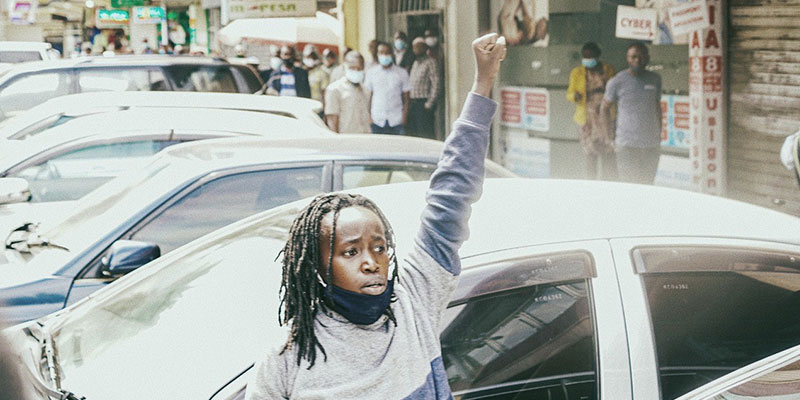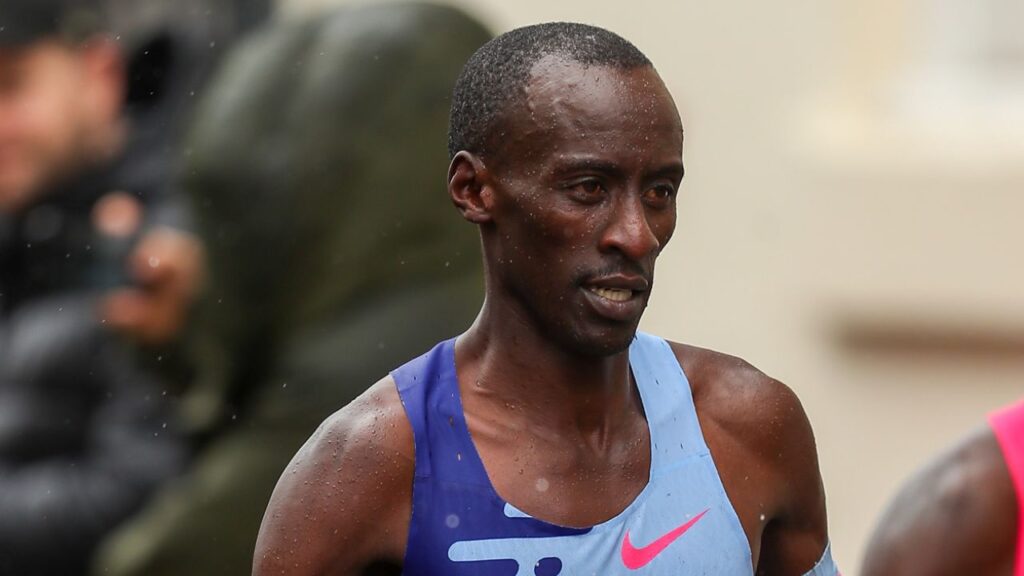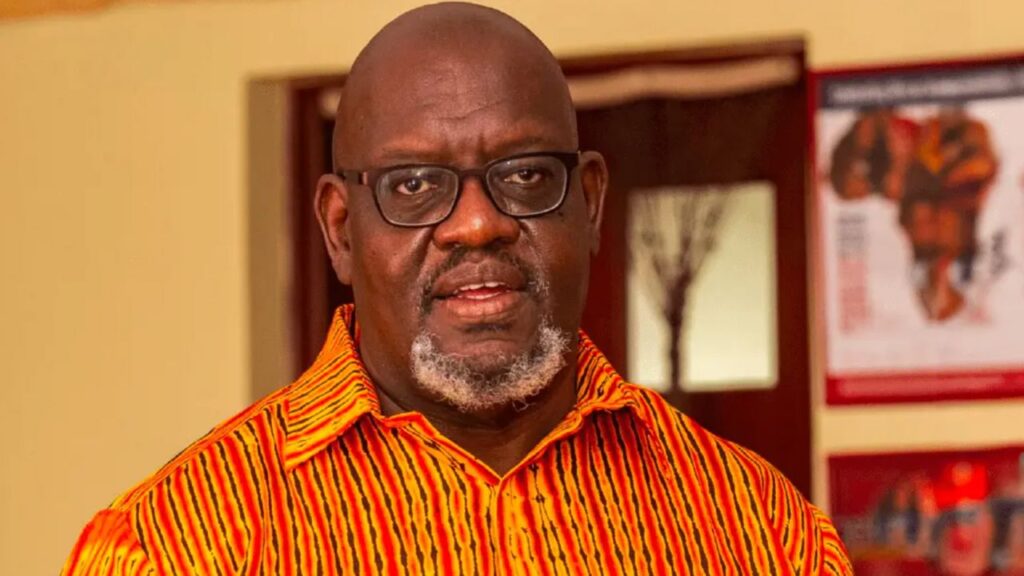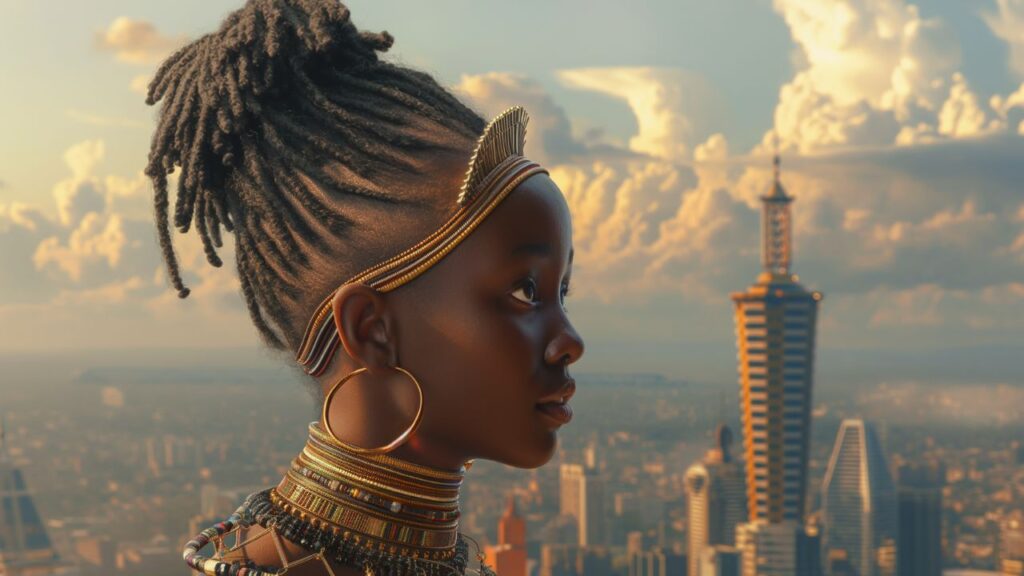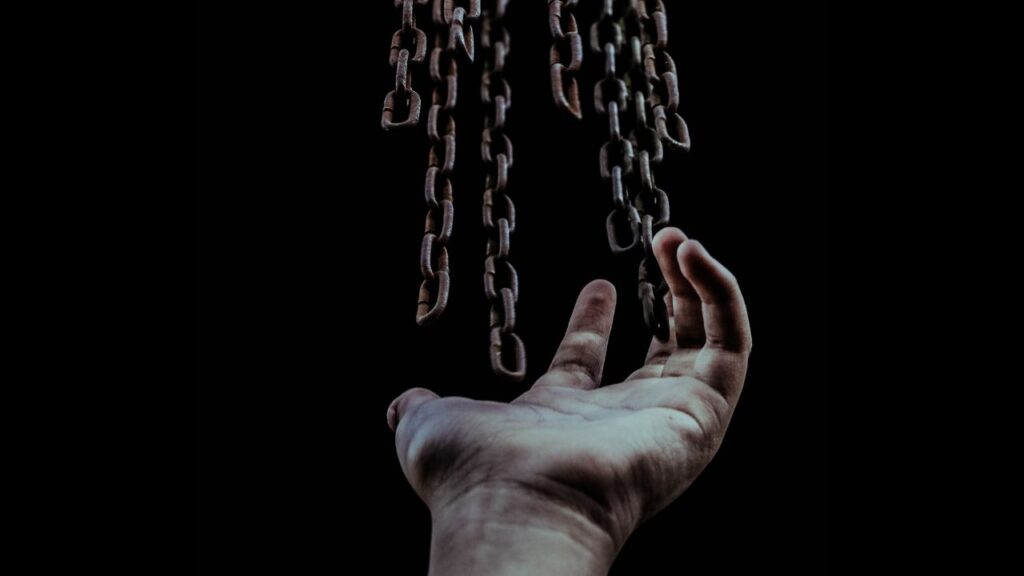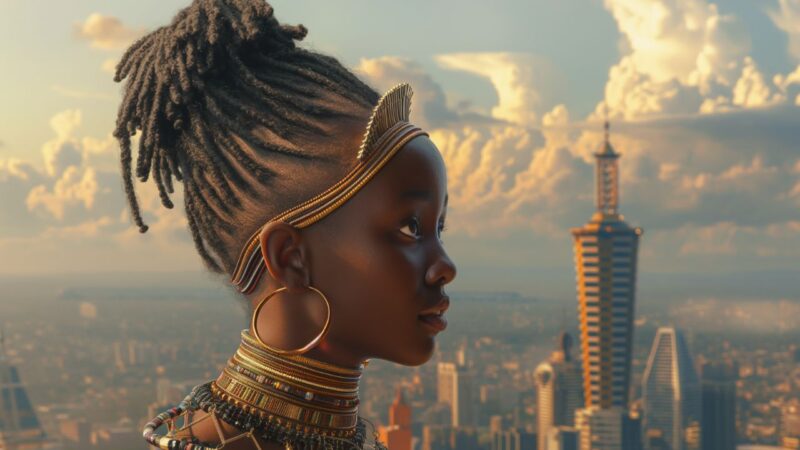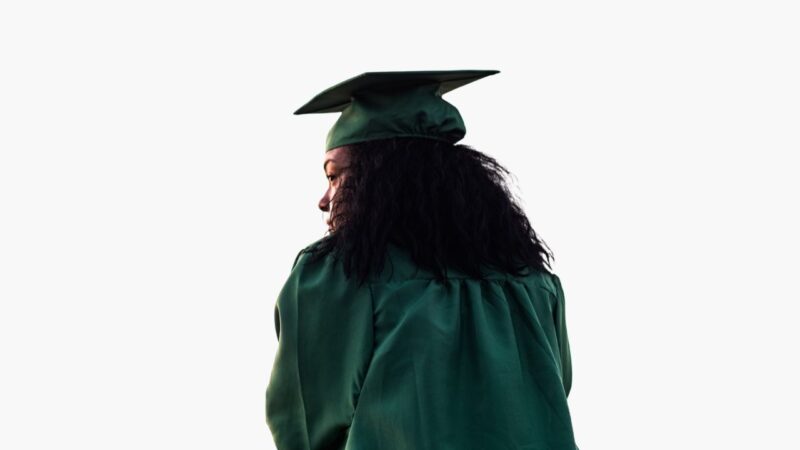On the thirtieth anniversary of the massive pro-democracy Saba Saba day ( 7th July) demonstrations in Kenya, Tuesday’s People’s March began in the very places where state violence is still laid bare: Mathare, Kayole, Dandora, Kibera, and other informal settlements in Nairobi. From as early as 7AM that grey cold-season morning, human rights defenders at the Mathare Social Justice Centre (MSJC) and allies from the community began preparing for their march. They lined posters and banners along the front of the centre. They raised up large flags, one in each hand, and spun, watching the fabric billow. They tested loudspeakers. They sang and danced to protest music together.
Thirty years ago, hundreds of demonstrators flooded the city centre, led by a coalition of pro-democracy political leaders, to demand multi-party democracy and the end of authoritarian rule under President Daniel arap Moi. On Tuesday, grassroots human rights defenders organised a People’s March—a leaderless event that was, on principle, neither branded and sponsored by any organisation, nor “approved” beforehand by authorities—to demand a set of basic human rights necessary to live a dignified life.
Ironically, in 1990, the first Saba Saba demonstration under Moi’s dictatorship was able to at least get within the vicinity of the Kamukunji grounds, though it was eventually met with lethal police force. This time in 2020, before demonstrators were able to even leave Mathare, Dandora, Kibera, Kayole, and other meeting places, clots of police officers had already begun blocking their passage and arresting leading organisers. Only minutes after demonstrators at the Mathare Social Justice Centre began singing, police shot tear gas at them.
After the inaugural plumes of tear gas cleared from the front of MSJC, Mama Victor walked up to me, gave me a long embrace, looked to where the police were gathered, and abruptly said, “I’m going there to take tea.”
Mama Victor has a face like calm waters, smooth and serene like one of Picasso’s monumental women. Like the other members of the Network of Mothers and Widows of Victims and Survivors who had gathered at MSJC to participate in the march, she wore a white gown over her clothes, like those for baptisms. Written on the front of all of the gowns were the names of loved ones killed by police. She clenched in her hand the poster she had intended to march with: a large photograph of a young man, with the words “Victor Okoth Obondo. 1994-2017.”
Three years ago, Mama Victor lost both of her sons on the same day. It was August 9, 2017, when post-election unrest led to violent police crackdowns in informal settlements across the country. Victor, 22, and Bernard, 25—the son of her deceased sister, whom she raised as her own—were on their way home to Mathare when they were caught up in protests contesting election results. Police shot live bullets. Bernard was shot in the head and died instantly; Victor was shot in the stomach and died before he reached the hospital.
At the time, Mama Victor’s shock and grief was forced into the confines of a politically charged election. Victor and Bernard’s burials had to be rushed, but, in her account to journalist Isaac Otidi Amuke, she says she was “fortunate” to even have that. Other mothers, grandmothers, widows, and relatives, are often denied the “privilege to mourn,” as people can be arrested for even holding vigil for those killed by police.
“In the beginning, I would just wake up, see the photo of my sons, and cry,” she says. But as the once-searing pain subsided with time, she realized that it was only people like her who could sit with other mothers of victims and “share the pain we feel.” So she and a few other core members formed the Network of Mothers and Widows of Victims and Survivors.
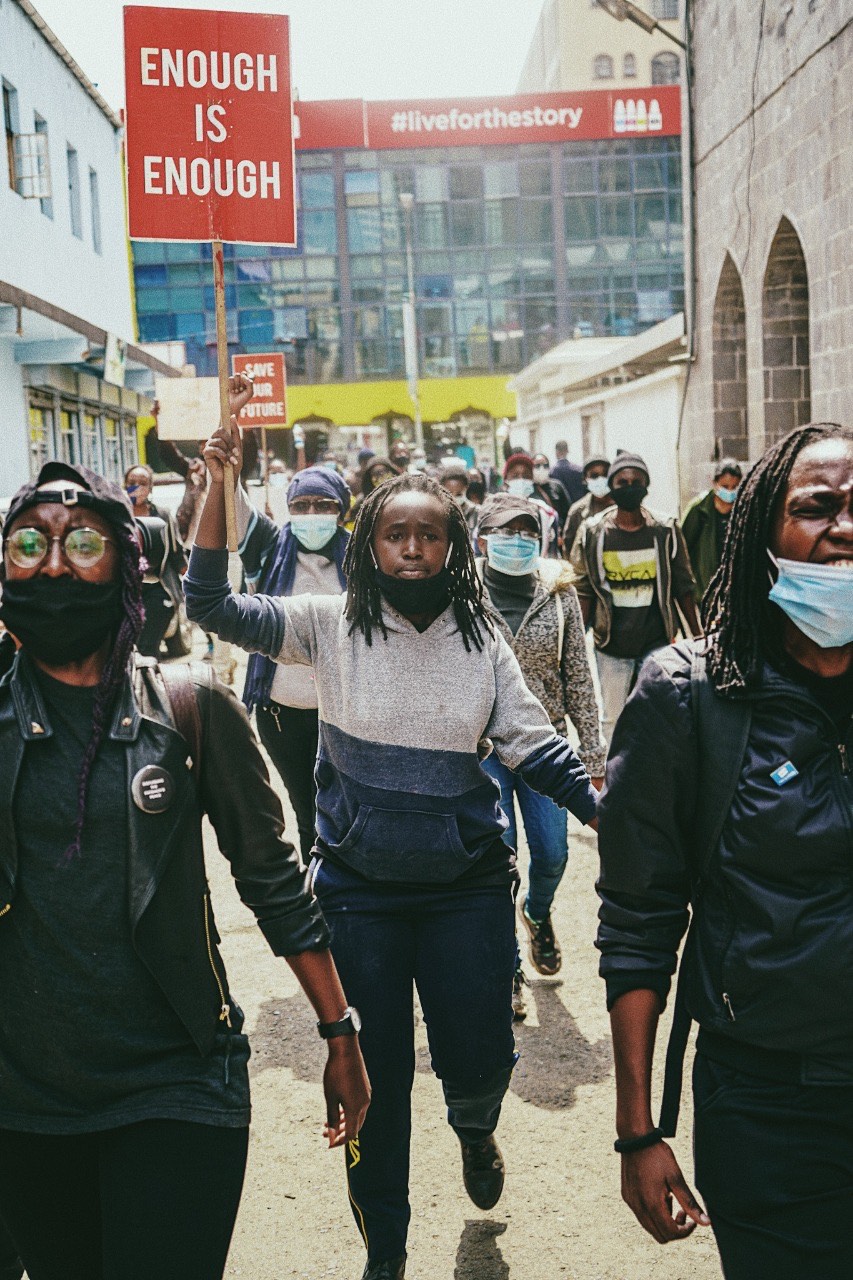
The word “activist,” and the cynicism around it, often obscures the fact that some like Mama Victor never chose to be activists. Rather, it was the decision of some police officers sent to control “riots” on August 9, 2017 to pull the trigger—and Mama Victor’s refusal to accept impunity as an answer—that has landed her here. Taking tea in front of police officers on Saba Saba day.
Right off of the main road where over a dozen police officers were gathered, behind a kiosk selling medicinal herbs, was a breakfast kibanda. Mama Victor sat down on the mbao-bench to take chai and chapati. On the bench next to her, she set down the poster of Victor and another poster of Yassin Moyo, the 13-year-old boy who was shot in Kiamaiko on March 30 by police enforcing curfew, while he stood on the balcony of his family’s house.
Almost immediately, two policeman approach Mama Victor. They ask her what she is doing, and she says drily that she is taking tea. One orders her to get up and leave. “I can’t,” she says, “because I am taking tea.” They say no “gatherings” are allowed here—referring to the protest songs that had just been silenced by tear gas—and once again she says she is not gathering anything, she is just taking tea.
The humiliating interrogation continues. One officer asks her why she is wearing white, to which she responds that those are her clothes. He sees her facemask, draped loose on her neck, and with his wooden baton, prods at the human rights logo printed on it: “What is this?” Even with his stick pointed at her neck, Mama Victor didn’t let her chin drop. She raises her voice and reaffirms that she is not doing anything wrong by wearing her own clothes and drinking tea. She takes two cups and pours the hot, milky tea from one cup into the other, in a long, white cascade, to cool it.
Mama Victor is not naive about dealing with the police. As a human rights defender at MSJC, she collects evidence to document police brutality in Mathare, which means that, like other grassroots organizers unprotected by international institutions, in the past, she has received threats from anonymous callers and been followed for days by strange men. If she talks back to police, it is not because she believes she is untouchable.
One police officer orders Mama Victor to remove the white robe and throw away the posters of Victor and Yassin. A crowd gathers around this image of a thousand words: a policeman with his stick, standing above a woman seated on a wooden bench, trying to take her breakfast. Mama Victor refuses to throw away the posters and, her shouts reaching a fever pitch, she points to the poster of Victor on the bench next to her and asks the wrenching, simple question: “Can I not even take tea here with my child?”
Despite the fact that the state has already heaped layers of violence on this woman—murdering her sons, denying her justice, leaving her to solve her own children’s murders, plus the baseline systemic neglect that Mathare and other informal settlements suffer—the state has denied Mama Victor the dignity of even appearing before the Kenyan public by choking the Saba Saba day demonstration before it started.
They cannot, however, strip away the eternal truth that she is—and always will be—Mama Victor. Victor Okoth Obondo, frozen forever in that crouch, his arm resting on his knee, with a cool, easy smile. Her baby.
Mama Victor grabs the poster and, breaking into a flow of Dholuo, speaks straight to Victor. “Victor, you were so handsome, everyone said. You were kind, hard-working. We shouldn’t have come to Nairobi. Perhaps if we were home….” Another woman in the back begins to wail, and the police slink away.
—
In The Appearance of Black Lives Matter, visual activist Nicholas Mirzoeff writes that for Black people in 2014’s BLM protests to show up in the way they did was for them to “appear as Black in a way that is not codified by white supremacy.” To “appear,” he writes, is to confront state power that says, “Move along, nothing to see here,” and to demand to be seen. To “appear” is to be grievable, worth grieving, and to force others to look.
All of the grassroots human rights defenders and allies who weren’t already arrested by 10AM and furtively hopped onto matatus into town, knowing that scores of police would be waiting for them there too, understood this. They rejected the idea that a demonstration could possibly be first approved by the government, and they claimed—as victims of structural violence themselves—their right to “appear.”
Human rights defenders on Tuesday’s Saba Saba day, knew that Kenya’s comfortable class is not ignorant of plight of the poor but, rather, chooses to ignore it. Like Black civil rights activists of the U.S. in the 1960s, they knew that the most powerful message would have to be communicated through the medium of their own bodies: kneeling together, unfazed and fists up, within a storm of tear gas, or proclaiming “Whatever happens, I am not afraid” while being dragged by officers into the boot of a car.
It worked. Photographs and videos from Tuesday show the full, militarized force of the state concentrated onto the unarmed, vulnerable bodies of the city’s poorest, bodies which already bear the violence of living in districts with no water, going to bed hungry, loving people who were murdered by serial killer cops.
Mama Victor says that, when she reached the city centre, she was followed closely by several police officers—so closely that other organizers arranged for a cab to take her directly home. That is how much the state fears a middle-aged woman wearing white and holding a poster of her son, whose smile can never fade anymore. Even though the state had stripped Mama Victor of every other opportunity to express her grief and demand justice, the one they could not take away—her own self, the mother of two men they killed—is indeed the most powerful.
At first, this particular kind of protest seems like a paradox: how can leaning into one’s vulnerability possibly be an expression of power? But if you think about it a bit more, it makes intuitive sense. In a widely shared video from Tuesday afternoon, MSJC co-founder Juliet Wanjiru Wanjira is cornered between two parked cars, surrounded by several armed police officers attempting to arrest her. Without flinching, she says she will not cooperate and asks them, “Why are you arresting me?”
One officer asks back, “Why are you protesting?”
“Because you’re killing us!”
“Who is killing you?”
“You! Police!” The officer begins to walk away, and she continues: “You are killing us in our communities! Poor communities!” Both Wanjira and Mama Victor display no fear, and they lean into her identity as the victims of police violence in the face of police themselves.

The police leave Wanjira alone. She turns to those around her, throws her fist in the air, and shouts, “When we lose our fear, they lose their power!” Her courage doesn’t come from the security of privilege, but rather defiance even in the face of her own vulnerability, as someone who faces the real risk of being disappeared or executed, a tragic fate that has met many other Kenyan human rights defenders.
Those with a lived experience of state violence have the most powerful things to say to the government. Indeed, even if they marched silently in town, their bodies would speak volumes. Perhaps that is what the state fears most—people who see not only their own scars but also see clearly who inflicted them. Perhaps that is why police coordinated so thoroughly to block demonstrators from even stepping foot on the road to the city centre.
This completely counters how certain newspapers reported the day’s events: that the Saba Saba demonstrations were shut down, somehow failed, or didn’t happen at all. Ultimately, the entire country witnessed the physical violence that police officers inflicted on peaceful protestors. But, more than that, they witnessed how this violence was doled out on people who already bore state violence within their own bodies.
People like Mama Victor, a living testament to the bloodied hands of the state. Her survival is resistance. Her dogged commitment to documenting extrajudicial killings is resistance. Her sitting down to take tea with her son in front of those who killed him—that, above all, is resistance.

